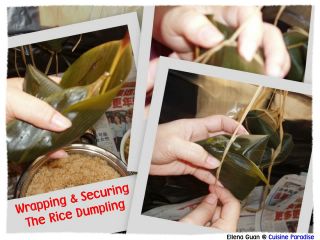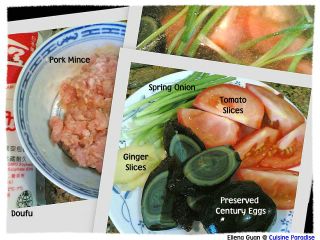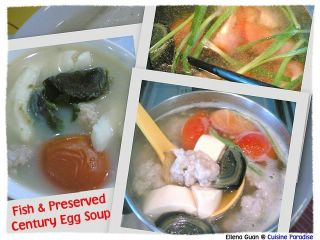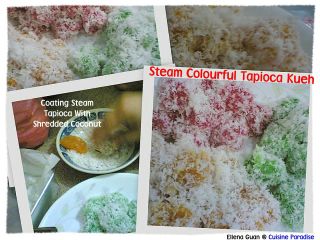 Every year during the "Five-month, Five-day" of Lunar calendar is known as the "Dumpling Festival". In Singapore, this traditional Chinese festival is celebrated by the eating of a variety of steamed glutinous rice wrapped in bamboo leaves call "Zong Zi". Dumpling Festival (Duan Wu Jie) is also known as Dragon Boat Festival. It is celebrated in rememberance of Chinese poet Qu Yuan, who was a loyal official in the court of the Chu Kingdom in old China.
Every year during the "Five-month, Five-day" of Lunar calendar is known as the "Dumpling Festival". In Singapore, this traditional Chinese festival is celebrated by the eating of a variety of steamed glutinous rice wrapped in bamboo leaves call "Zong Zi". Dumpling Festival (Duan Wu Jie) is also known as Dragon Boat Festival. It is celebrated in rememberance of Chinese poet Qu Yuan, who was a loyal official in the court of the Chu Kingdom in old China. Fishermen who heard that Qu Yuan drowned himself in the river set sail on boats to look for his body When they could not find it, they threw rice wrapped in bamboo leaves into the river so that the fish in the river would eat the rice instead of his body. Thus began the tradition of dragon boat races (creating a din to scare away the preying fish?) and eating rice dumplings on Duan Wu Jie.
Fishermen who heard that Qu Yuan drowned himself in the river set sail on boats to look for his body When they could not find it, they threw rice wrapped in bamboo leaves into the river so that the fish in the river would eat the rice instead of his body. Thus began the tradition of dragon boat races (creating a din to scare away the preying fish?) and eating rice dumplings on Duan Wu Jie. The usual local favourites of rice dumpling in Singapore are - Bak Chang(with salted egg), Nyonya, Mung Bean Rice Dumpling, Red Bean Rice Dumpling, etc. So for today we are making the Nyonya version which is towards the sweet side of Rice Dumpling.
The usual local favourites of rice dumpling in Singapore are - Bak Chang(with salted egg), Nyonya, Mung Bean Rice Dumpling, Red Bean Rice Dumpling, etc. So for today we are making the Nyonya version which is towards the sweet side of Rice Dumpling. The process of making Rice Dumpling can be consisted as tedious preparation. Because from the boiling,washing and soaking of bamboo leaves and strings to prepare all the necessary ingredients. It could take up to a few days to prepare ahead and after the wrapping up the dumpling, you still need to boil it in water for about at least 1.5 hrs to 2 hrs in order to get it cooked. But it's always good to make your own dumpling because you can add in whatever ingredients you prefer. I had include a short video clip for those who is interested in wrapping the dumpling, hope it helps.
The process of making Rice Dumpling can be consisted as tedious preparation. Because from the boiling,washing and soaking of bamboo leaves and strings to prepare all the necessary ingredients. It could take up to a few days to prepare ahead and after the wrapping up the dumpling, you still need to boil it in water for about at least 1.5 hrs to 2 hrs in order to get it cooked. But it's always good to make your own dumpling because you can add in whatever ingredients you prefer. I had include a short video clip for those who is interested in wrapping the dumpling, hope it helps.Ingredients: (make about 35, depending on the size)
2Kg Glutinous Rice
1 Tablespoons Salt
3 Tablespoons Oil
3-4 Cloves Garlic
2 Tablespoons Bunga Telang Juice/Blue Food Colouring
12-15 Pandan Leaves,cut into 1.5" length
Methods:
1. Soak Glutinous rice for at least 3 hrs or overnight, drain and set aside.
2. Preheat pan with oils and stir-fry garlic till frangrant then add in the drained rice and stir for a few minutes then add in salt, stir till combined.
3. Divide the rice into 2 portions, mix 1 portion of rice with colouring then set all aside to cool.
Bamboo Leaves
50-60 Pieces Bamboo Leaves
3-4 Bunch of Hemp Stings
Methods:
1. Bamboo leaves and hemp strings have to be pre-treated in advance too.
2. Heat a large pot of water, when water starts to boil, place bamboo leaves and hemp strings in. Make sure bamboo leaves and strings are fully immersed in water.
3. Continue boiling for 5 minutes, turn fire off remove the leaves and strings.
4. Roughly wash them in water then soak it in a pail of water overnight.
5. Remove leaves and strings from water before you need to use them.
Fillings:
800g Pork Belly/Chicken
300g Candided Winter Melon
30g Dried Mushrooms,
150g Dried Shrimps
150g Dried Chestnut, optional
50g Chopped Garlic
200g Chopped Shallot
Seasoning:
2 Tablespoons Black Pepper
6 Tablespoons Coriander Seeds
2 Tablespoons Dark Soy Sauce
2 Tablespoons Sugar
Pinch Of Salt
8 Tablespoons Cooking Oil
Methods:
1. Soak the dried chestnut overnight and drained.
2. Soak dried mushroom and shrimps separately until soft.
3. Dice the mushroom finley then chopped the shrimp.
4. Cut pork or chicken into small cubes/thick strips.
5. Heat 8 tablespoons of oil in a wok, fry shallots and garlic until fragrant then add dried shrimps, chestnut and mushroom.
6. Fry further till fragrant, stir in pork and seasoning and fry till pork is cooked.
7. Turn off heat and add in candied winter melon and mix well and set aside to cool.
Notes: If you are making Bak Chang, then you can omit the candied winter melon and add in 1 /2 Tablespoons of 5 spices powder when frying the filling.
You can either cooked all the ingredients together or you can separate the chestnut, dried shrimp and meat & mushroom in 3 different sections.
Wrapping the Dumplings:
1. Overlap two bamboo leaves and fold into a cone.(wipe the leave if it's too wet)
2. Put 1 tablespoon colour glutinous rice, 1 tablespoon plain glutinous rice, 1.5 tablespoons of filling and another 1 tablespoon plain glutinous rice on top.
3. Press gently with a spoon and top with a small pices of pandan leaves and wrap dumpling into a pyramid shape.
4. Tie with a string.
5. Boil some water in a pot, add 2 tablespoons of salt to the water, put in the tied dumpling and cook over high heat for 1.5 - 2 hours until rice is cooked through.
6. Remove the dumpling and hang it up to drip away any excess water and you can leave it at room temperature over night or keep unfinished dumpling in the freezer for a few weeks.
Notes: The ingredients and taste of the fillings are depend on individual, you can add in different kinds of meats(eg: chicken instead of pork) or beans(black-eyed bean, mung bean or red bean) and even salted egg) according to your taste.
There is no bean, chestnut or salted egg for traditional Nyonya Rice Dumpling, but you can create any favour when you get the hand on how to prepare the filling and wrapping. 





